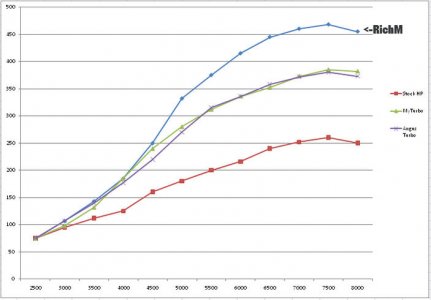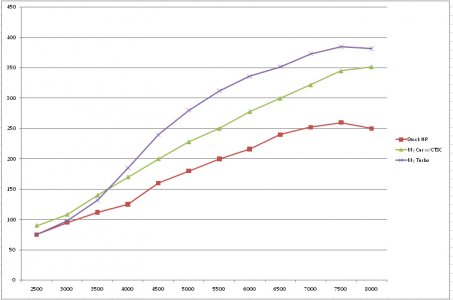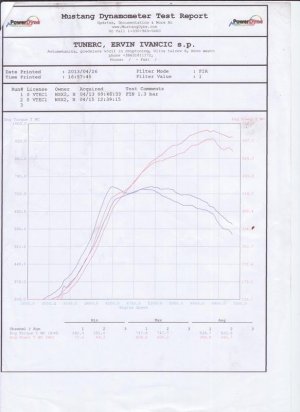I changed the exhaust housing on my turbo yesterday to an undivided .81 A/R ceramic coated one. Fortunately the bolt holes lined up with the hanger so everything just bolted right back up with minimal trouble. We had a .70 housing that did not have the bolt holes in the same place so they're definitely not all the same. I also changed to the 4" intake at the same time.
It made a tremendous difference. Way more than I expected. I'd estimate that it spools up about 400rpm sooner, and once it starts it hits full boost way faster than it used to (about 1k rpms from 0psi to full boost). That also means that I can get more boost with less throttle than before as well.
The fear with changing it of course is that the top end would start to lose power at higher RPMs, but you can see this isn't the case. I put the car on the 'heartbreak dyno' (dynapack) at Acura of Lynnwood today and got this graph. Pay no attention to the peak numbers, because this dyno is notorious for giving numbers that are lower than usual. Last year at this same meet everyone that dyno'd their cars was angry hehe. Today a 3.2L w laminova CTSC got 316hp just to give you an idea.

This old exhaust housing is the same size my friend's big turbo diesel truck has in it. Everybody I talk to (except angus) thinks it is way oversized for the requirements of this car and my power level. The fact that there's a 90 degree bend in the Y-pipe right before it goes into the housing means it is quite possible that more exhaust was being forced into one side of the housing than the other, which can't be good. Since the y-pipe isn't divided it makes no sense to have a divided housing on the turbo anyway.
If you want your angus turbo to be even better, this is a cheap upgrade that will blow you away (assuming that all the rest of you have 1.0 exhaust housings too). A new housing is
about $250, but I got mine used from a guy for $100, plus I bought him and the other guy helping me lunch and I had to pick up a gasket.. so the total was $135, which was well worth it.
I'll get some data logs on the street soon and compare it to the logs I captured the other day so I'll know for sure the differences in RPMs.








